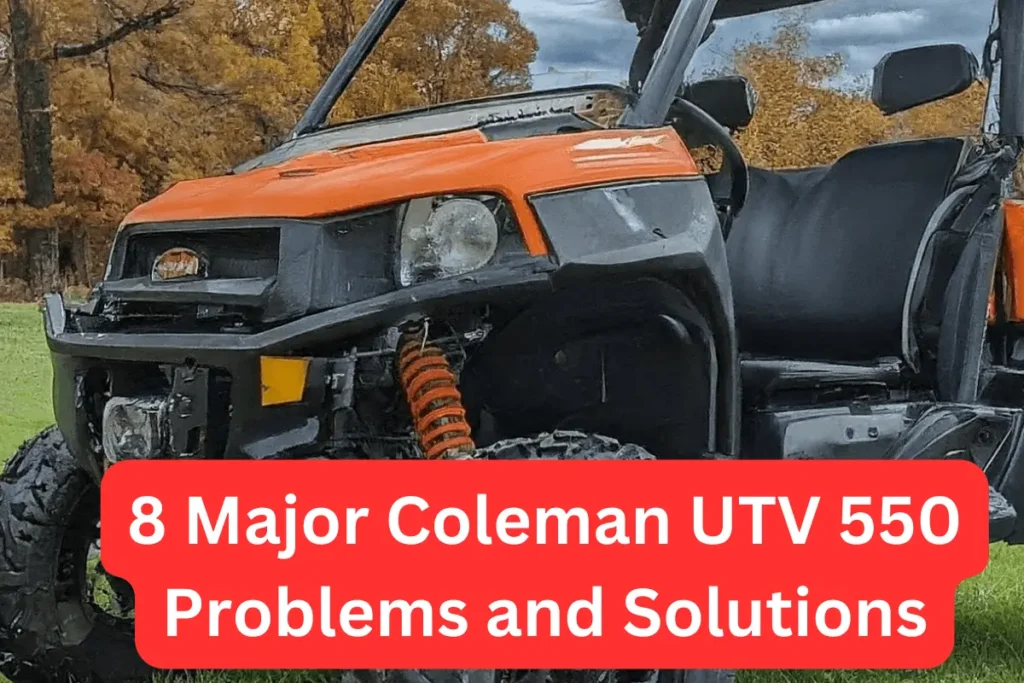The most common Cub Cadet ZT1 50 problems are starting issues, uneven cutting, smoke from the engine, blade engagement issues, steering problems and power loss problems.
Here we explore these problems in detail and provide the solutions in a way that a non-technical person also understands.
Cub Cadet ZT1 50 problems and solutions
Now we are going to explore the most common problems of cub cadets with their easy solutions. Also explore the Cub Cadet RZT 50 Problems.
1. Starting Problems
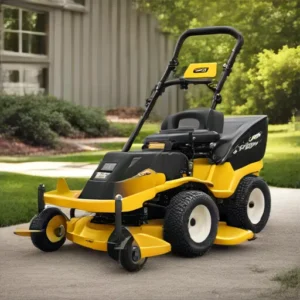
One of the most common problems is a dead battery. If your engine doesn’t crank at all when you turn the key, this is often the first place to check. A multimeter can help you determine if the battery voltage is below the required level, indicating that it needs charging or replacement.
Another common problem is a faulty ignition switch. If you hear a clicking sound when trying to start the mower, this could be a sign of a bad ignition switch or a malfunctioning starter motor. The ignition switch is responsible for sending a signal to the starter motor to crank the engine.
Over time, the contacts within the ignition switch can wear out, leading to intermittent or complete failure. Testing the ignition switch with a multimeter can confirm if it is the root cause.
A clogged fuel filter is another issue that can prevent the Cub Cadet ZT1 50 from starting. The fuel filter’s role is to ensure that clean fuel reaches the engine. Over time, debris and contaminants can clog the filter, restricting fuel flow.
Symptoms of a clogged fuel filter include difficulty starting the engine, sputtering, or stalling. Replacing the fuel filter is a straightforward solution to this problem.
Lastly, a malfunctioning starter motor can also be a culprit. If the starter motor fails, the engine won’t crank, regardless of the battery’s condition. Signs of a bad starter motor include a clicking noise or a complete lack of response when turning the key. Testing the starter motor with a multimeter can help diagnose this issue.
By familiarizing yourself with these common starting problems, you can better prepare yourself to tackle any issues that arise with your Cub Cadet ZT1 50.
Solutions
Below, we provide step-by-step instructions for troubleshooting and fixing common starting problems, alongside preventive measures to maintain optimal performance.
Firstly, a dead battery is a frequent culprit in starting issues. To test and replace a dead battery, begin by using a multimeter to check the voltage. If the reading is below 12.4 volts, the battery likely needs a charge or replacement.
First, disconnect the negative (black) cable, then disconnect the positive (red) cable. Remove the old battery and install the new one, reconnecting the positive cable first. Regularly check the battery voltage and clean any corrosion on the terminals to prevent future issues.
Next, a clogged fuel filter can impede fuel flow and prevent the engine from starting. To clean or replace the fuel filter, locate it along the fuel line and remove it.
If cleaning, use a commercial fuel system cleaner to dissolve any debris. If replacing, install the new filter, ensuring the arrow on the filter aligns with the fuel flow direction. Replace the fuel filter annually or as recommended in the user manual to maintain a clear fuel pathway.
Issues with the ignition switch and starter motor can also hinder starting. To check the ignition switch, turn the key and listen for a clicking sound. If absent, inspect the connections for any looseness or corrosion. Clean or tighten connections as needed.
If the starter motor clicks but does not engage, it may require replacement. Consult the mower’s manual for detailed instructions on accessing and replacing the starter motor.
Also explore the Cub Cadet LTX 1050 problems
2. Uneven Cutting
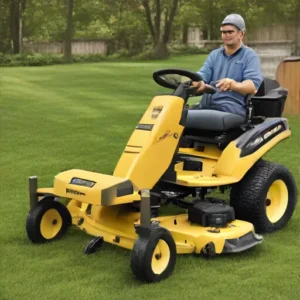
Uneven cutting is a common issue faced by users of the Cub Cadet ZT1 50 and similar models. Often, the primary cause of this problem is a poorly maintained mower deck.
A misaligned or unbalanced mower deck can lead to inconsistent blade height, causing the grass to be cut at varying lengths. Ensuring that the deck is properly aligned and balanced is crucial for achieving a uniform cut.
Regularly inspecting and adjusting the deck, as well as following the manufacturer’s guidelines, can help maintain its optimal performance.
Another significant factor contributing to uneven cutting is the condition of the mower blades. Dull or damaged blades can tear the grass rather than cutting it cleanly, resulting in an uneven appearance.
It’s essential to sharpen the blades regularly and replace them if they become excessively worn. Keeping spare blades on hand can be beneficial for timely replacements, ensuring that the mower operates efficiently.
Uneven tire pressure is another potential cause of inconsistent cutting heights. When the tires on the Cub Cadet ZT1 50 are not inflated to the recommended levels, it can cause the mower to tilt, leading to an uneven cut.
Regularly checking and maintaining the correct tire pressure is a simple yet effective way to prevent this issue. Using a reliable tire gauge can help ensure that the tires are evenly inflated.
Operating the mower on a level surface is also critical for achieving an even cut. Mowing on slopes or uneven terrain can cause the deck to tilt and result in inconsistent cutting. Whenever possible, mow on flat, level ground to avoid this problem.
Additionally, external factors such as thick grass or debris can impede the mower’s performance. Clearing the lawn of any obstacles before mowing and adjusting the cutting height to suit the grass density can help maintain an even cut.
Expert opinions and real-world examples underscore these points. Lawn care professionals often emphasize the importance of regular maintenance and adjustments to prevent uneven cutting. Also explore the Cub Cadet LTX 1045 problems.
Solutions
Firstly, leveling the mower deck is paramount. To begin, gather necessary tools such as a wrench set, a ruler, and a level. Start by parking the mower on a flat surface and engage the parking brake for safety. Using the level, check the deck’s alignment from side to side and front to back.
Adjust the deck height adjusters until the deck is level. This precise adjustment is crucial as an uneven deck can lead to inconsistent grass cutting.
Another critical step is inspecting and sharpening the blades. Dull blades not only cause uneven cuts but also damage the grass, making it susceptible to disease. Remove the blades using a wrench and inspect them for nicks or damage.
Sharpen the blades using a file or a dedicated sharpening tool, ensuring that you maintain the original angle of the blade edge. Regularly sharpening the blades, ideally after every 20-25 hours of mowing, will keep them in optimal condition.
Maintaining proper tire pressure is equally important. Uneven tire pressure can make the mower tilt, leading to an uneven cut. Use a tire pressure gauge to check the pressure of all four tires, ensuring they match the manufacturer’s recommended levels.
Adjust the pressure as needed using an air pump. Consistent tire pressure not only improves cut quality but also enhances the mower’s overall stability.
Mowing in different patterns can also contribute to a more even cut. By alternating the direction of mowing each time, you prevent the grass from leaning in one direction and avoid creating ruts in the lawn.
Additionally, setting the mower to the ideal cutting height for your specific grass type is vital. For example, Bermuda grass thrives at a height of 1.5 to 2 inches, while Kentucky bluegrass prefers 2.5 to 3.5 inches. Adjusting the cutting height according to the grass type ensures healthy growth and a uniform appearance.
3. Smoke from the Cub Cadet ZT1 50 Engine
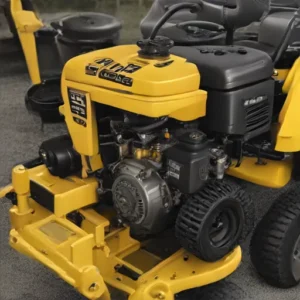
Understanding the common causes of smoke emissions from your Cub Cadet ZT1 50 engine is crucial for effective troubleshooting. The primary reasons include oil leaks, clogged air filters, and issues related to fuel quality. Each of these factors can significantly affect the performance of your engine and lead to visible smoke.
Oil leaks are a prevalent cause of smoke in the Cub Cadet ZT1 50. These leaks often occur due to worn-out gaskets or seals. When oil drips onto hot engine components, it can produce smoke.
It’s essential to check for oil spots under the mower or on the engine itself, as these are indicative signs of a leak. Regular inspection and timely replacement of gaskets and seals can help mitigate this issue.
Another common cause is a clogged air filter. The air filter’s role is to ensure clean air enters the engine, which is vital for the proper combustion process. When the air filter is blocked, it can lead to an improper air-fuel mixture. This imbalance causes the engine to burn fuel inefficiently, resulting in smoke.
According to maintenance statistics, clogged air filters are a frequent issue, occurring in about 20-30% of lawn mowers. Regularly cleaning or replacing the air filter can prevent this problem and enhance engine performance.
Fuel quality and type also play a significant role in smoke emissions. Using low-quality fuel or the wrong type of fuel can lead to incomplete combustion. This incomplete combustion process produces smoke and can damage the engine over time.
Always ensure you are using the recommended fuel type for your Cub Cadet ZT1 50. Additionally, storing fuel for extended periods can lead to degradation, which negatively impacts engine performance. Also explore the Cub Cadet LTX 1040 problems.
Solutions
One of the most common causes of smoke is an oil leak. To resolve this, begin by inspecting the engine for any visible signs of oil leakage.
Focus on the gaskets and seals, which are often the culprits. If you detect a leak, replace the faulty gaskets and seals. Ensure you use the correct parts specified for the Cub Cadet ZT1 50 to avoid compatibility issues.
Another frequent cause of smoke is a clogged air filter. A dirty air filter restricts airflow, leading to incomplete combustion and excessive smoke. To address this, locate the air filter housing and remove the filter. Inspect it for dirt and debris.
If it is clogged, you have two options: clean it or replace it. For cleaning, use compressed air to blow out the dirt, or wash it with warm soapy water and let it dry completely before reinstalling. If the filter is beyond cleaning, replace it with a new one that matches the specifications of your Cub Cadet ZT1 50.
Fuel quality plays a pivotal role in the efficient operation of your mower. Always opt for high-quality, ethanol-free fuel to prevent engine issues.
Regularly check the fuel system, including the fuel lines and the fuel filter, for any signs of wear or blockage. Replacing a worn-out fuel filter can significantly improve engine performance and reduce smoke emissions.
4. Blade Engagement Problems
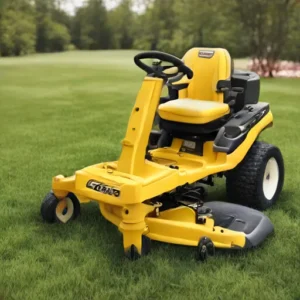
Blade engagement is a crucial aspect of the Cub Cadet ZT1 50’s functionality. It refers to the process by which the mower’s blades are activated to commence cutting grass. Proper blade engagement ensures efficient, clean cuts and overall performance of the mower. However, users of the Cub Cadet ZT1 50 have reported several common issues related to blade engagement.
One frequently encountered problem is the blades not engaging at all. Users often describe turning on the PTO (Power Take-Off) switch only to find that the blades remain inactive. This can be particularly frustrating when needing to mow large areas.
Intermittent engagement is another issue, where the blades engage sporadically, leading to inconsistent mowing patterns and uneven grass cutting. Some users have also reported hearing strange noises during engagement, such as grinding or squealing sounds, which can be indicative of underlying problems.
These issues can stem from multiple causes. Electrical problems are a significant contributor, often involving faulty PTO switches or wiring issues. A malfunctioning PTO switch can prevent the electrical signal required for blade engagement, resulting in non-responsive blades.
Mechanical failures are another potential cause. For instance, worn or damaged belts and pulleys can impede the smooth operation of the blades, leading to intermittent engagement or strange noises. Regular wear and tear on these components over time can exacerbate these problems, necessitating timely maintenance or replacement.
Actual user experiences highlight the prevalence of these issues. A study of user reviews and feedback reveals that a considerable number of ZT1 50 owners have faced blade engagement problems.
Recurring patterns indicate that electrical and mechanical faults are the primary culprits. Addressing these problems promptly can significantly enhance the mower’s performance and longevity. Also explore the Cub Cadet xt1 problems.
Solutions
Start by checking the PTO switch, as it is a common culprit. Ensure the switch is in the correct position and functioning properly. To test the PTO switch, use a multimeter to check for continuity; if the switch is faulty, replacing it is necessary.
Next, inspect the belts and pulleys. Worn or damaged belts can hinder blade engagement, so examine them for signs of wear, fraying, or cracks.
Ensure the belts are properly tensioned and aligned. Additionally, inspect the pulleys for any obstructions, damage, or excessive wear. Clean the pulleys and replace any damaged components as needed.
Electrical connections play a vital role in the blade engagement mechanism. Check all connections for corrosion, loose wires, or disconnections.
Clean any corroded terminals and secure loose wires to ensure proper connectivity. If necessary, use dielectric grease to protect the connections from future corrosion.
Once the root cause is identified, implement the corresponding solution. For a faulty PTO switch, follow the user manual’s instructions to replace it accurately.
If the issue lies with the belts or pulleys, replace worn belts, realign pulleys, and ensure proper tension. For electrical issues, clean and secure all connections thoroughly.
5. Steering Problems
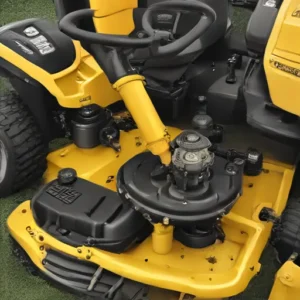
One prevalent problem is the difficulty in steering, which can make the mower challenging to maneuver. This issue often arises from worn-out steering components such as the steering gear or linkages. Over time, these parts can deteriorate, leading to increased resistance when trying to turn the mower, making it harder to control.
Another frequent issue is uneven steering response. This can manifest as the mower pulling to one side or not responding symmetrically to steering inputs. Such problems can be attributed to improper tire pressure, which can cause unbalanced traction and affect the steering.
Additionally, misaligned steering systems can result in inconsistent steering behavior, making it difficult to maintain a straight path.
Vibrations in the steering system are also commonly reported by Cub Cadet ZT1 50 owners. These vibrations can be felt through the steering wheel and can be both uncomfortable and indicative of underlying problems.
Vibrations often stem from issues such as loose steering components, unbalanced wheels, or worn-out bearings. Addressing these vibrations promptly is crucial to prevent further damage and ensure smooth operation.
Real-world examples highlight the frequency and impact of these steering problems. For instance, a study conducted by a lawn equipment review site found that approximately 30% of Cub Cadet ZT1 50 owners reported difficulties with steering, with uneven steering response being the most cited issue. These statistics underscore the importance of regular maintenance and prompt attention to any steering anomalies.
Understanding these common steering problems can help Cub Cadet ZT1 50 owners identify potential issues before they escalate. By keeping an eye on steering performance and addressing any irregularities promptly, users can ensure their mower operates efficiently and safely.
Whether it’s checking tire pressure or inspecting steering components, proactive measures are key to preventing and resolving steering issues.
Solutions
Begin with regular maintenance, which is crucial for the longevity and functionality of the mower. A fundamental step is to frequently check and adjust tire pressure.
Proper tire inflation is essential as uneven pressure can exacerbate steering issues, leading to uneven cuts and added strain on the steering system.
Next, inspect and replace worn-out steering components. Over time, the steering components, such as tie rods and bushings, may wear out, causing steering difficulties.
Conduct a thorough inspection of these parts for signs of wear and tear. If any components appear damaged or excessively worn, replace them promptly to restore smooth steering operation.
Ensuring proper alignment is another critical aspect. Misalignment can significantly impact the steering performance of your Cub Cadet ZT1 50.
Verify that the wheels are aligned correctly and make necessary adjustments to avoid drifting and uneven cuts. Regular alignment checks can prevent long-term steering issues and maintain the mower’s efficiency.
Determining whether to seek professional help or adopt a DIY approach depends on the complexity of the problem. For minor issues, such as tire pressure adjustments or simple component replacements, a DIY approach is often sufficient.
However, for more complex problems, such as persistent alignment issues or significant steering component damage, consulting a professional is advisable.
6. Power Loss problems

One of the most frequent culprits is a clogged air filter. When the air filter is obstructed, it restricts the airflow to the engine, thereby reducing its efficiency.
Studies show that a clogged air filter can diminish engine performance by up to 50%. This is often accompanied by signs such as unusual engine noises and decreased overall performance.
Another prevalent issue is a dirty fuel system. Fuel systems can accumulate dirt and debris over time, leading to blockages that hinder fuel flow.
A dirty fuel system can reduce engine efficiency by as much as 30%. Symptoms of this problem include difficulty starting the mower and inconsistent engine performance. Regular cleaning and maintenance of the fuel system are crucial for preventing such issues.
Spark plug problems are also a common cause of power loss in the Cub Cadet ZT1 50. Worn or fouled spark plugs can lead to incomplete combustion, resulting in a loss of power.
Signs to look out for include hard starting, misfiring, and reduced engine performance. Replacing spark plugs periodically can help maintain the engine’s efficiency.
Additionally, other factors such as a malfunctioning carburetor, old or contaminated fuel, and poor engine oil quality can contribute to power loss. A malfunctioning carburetor can disrupt the air-fuel mixture, leading to inefficient combustion.
Old or contaminated fuel can clog the fuel lines and reduce engine performance, while poor engine oil quality can increase friction and wear, further diminishing power.
Solutions
To address power loss problems in your Cub Cadet ZT1 50, follow these step-by-step solutions. Each task outlines the necessary tools, approximate time required, and essential safety precautions. Implementing these measures will help restore your mower’s performance and ensure its longevity.
Cleaning or Replacing Air Filters
A clogged air filter can significantly reduce the engine’s power. To clean or replace it, you’ll need a screwdriver, a clean cloth, and a new air filter (if necessary). This task should take approximately 20 minutes.
Steps:
1.Turn off the mower and disconnect the spark plug to stay safe.
2.Find the air filter cover, which is usually on the side of the engine.
3. Remove the cover using a screwdriver.
4. Take out the air filter and inspect it. If it’s dirty, clean it with a cloth. If it’s damaged, replace it with a new one.
5. Reassemble the air filter and cover.
Maintaining the Fuel System
Issues with the fuel system can also lead to power loss. Regular maintenance involves checking the fuel quality and cleaning the fuel filter. You will need a screwdriver, a fuel filter, and a fuel container. This process takes about 30 minutes.
Steps:
- Ensure the mower is turned off and the spark plug is disconnected.
2. Locate the fuel filter, usually between the fuel tank and the carburetor.
3. Use a screwdriver to remove the clamps holding the fuel line.
4.Put in a new fuel filter to replace the old one.
5. Reattach the fuel line and secure it with the clamps.
Checking and Replacing Spark Plugs
Faulty spark plugs can cause the engine to lose power. For this task, you need a spark plug wrench and a new spark plug if replacement is necessary. This should take about 15 minutes.
Steps:
- Disconnect the spark plug wire.
2. Use the spark plug wrench to remove the old spark plug.
3. Inspect the spark plug for damage or wear.
4. If necessary, replace it with a new spark plug.
5. Reconnect the spark plug wire.
Conclusion:
By following this guide you can easily get rid from the Cub Cadet ZT1 50 problems because here I provide the complete details about it.

